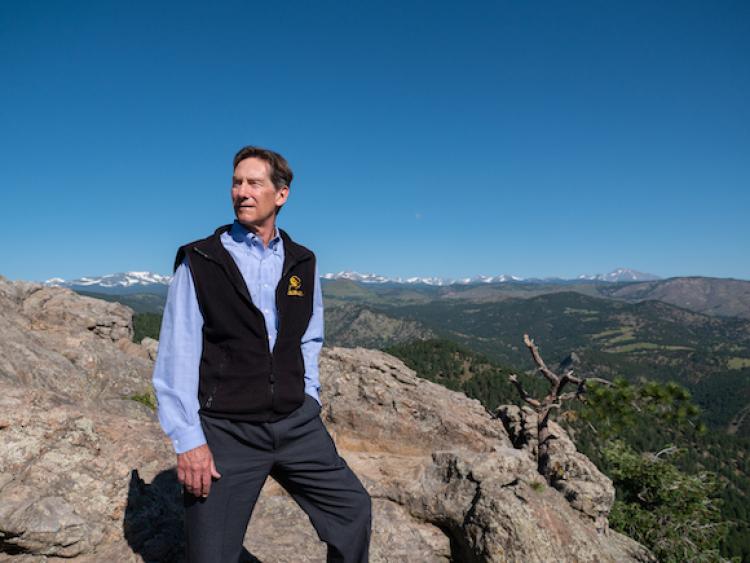This is not CU’s first pandemic
Let us stand strong today and give future Buffs some broad shoulders on which to build a better CU
These days are extraordinary. But they are not unprecedented. This is not the first time the University of Colorado Boulder has weathered a pandemic caused by a virus.
On Sept. 21, 1918, the 1918 pandemic made its first reported appearance in Colorado here, on our campus. On that day, 12 members of the Student Army Training Corps, whose members had come from a military base in Kansas, fell ill.

At the top of the page: Composite of 1870s building at the University of Colorado at Boulder. Photo Illustration by Casey A. Cass/University of Colorado. Above: James W.C. White
The student-soldiers were housed at the Armory Building—now home to CU Boulder’s College of Media, Communication and Information—and trained on campus.
Within days, 75 CU Boulder students were quarantined in the Alpha Tau Omega and Sigma Chi fraternities, which became makeshift hospitals, as did Woodbury Hall, then a men’s dorm. Also, Temporary Building 1, then CU’s teaching hospital, became an infirmary for local flu victims.
Nearly every medical student in Boulder performed medical relief work here or in communities where doctors were overwhelmed with the flu patients, the CU Board of Regents reported.
The Boulder Daily Camera regularly printed names of residents stricken with or killed by the flu. Within weeks, Boulder ordered a city-wide quarantine. The university shut down. The Camera printed large ads with tips on how to prevent influenza, featuring now-familiar suggestions like avoiding crowds and washing hands, local historian Silvia Pettem has reported.
Over the next 10 months, 649 Boulder residents were sickened and 119 died, Colorado historian Stephen J. Leonard found. Nearly 8,000 Coloradans died. Our state was one of America’s hardest hit, perhaps partly because of its high altitude and high population of miners with pulmonary problems, researchers suggest.
Worldwide, the 1918 pandemic killed perhaps 50 million people of about 1.8 billion on the planet.
In 1918, students, staff members, professors and citizens arrayed themselves against an invisible enemy. They implemented quarantines, kept their distance from others, practiced better hygiene. Had they not done so, the death toll would have been higher.
We know this because of research like a 2007 report in the Journal of the American Medical Association that examined the social-distancing measures (quarantines, school closures, bans on public gatherings) implemented in several U.S. cities.
Let us stand strong today and give future Buffs some broad shoulders on which to build a better CU."
Denver, like Boulder, sustained a lower death rate than cities like Pittsburgh, which delayed social distancing. The measures taken in 1918 worked as intended, and they foreshadowed those taken now.
This is worth recalling as our students and faculty take a crash course in remote learning and many staff members work from home. Today, we do not know how long strict social-distancing measures will last or how bad the novel coronavirus will get.
But we do know that when CU Buffs once traveled a similar road, the group banded together, did its best, and, together, prevented more deaths. That group emerged stronger and wiser.
History (one of those liberal arts) teaches us that we always stand on the shoulders of those who came before. We do so today, even in this difficult and unusual time. Let us stand strong today and give future Buffs some broad shoulders on which to build a better CU.
Sincerely,

James W.C. White
Interim Dean of the College of Arts and Sciences

